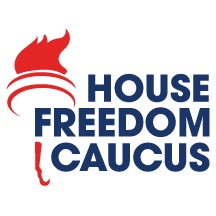Freedom Caucus follies
Posted on March 28, 2017

By Source (WP:NFCC#4), Fair use, https://en.wikipedia.org/w/index.php?curid=48412772
Published in The Hill.
Ah, the Freedom Caucus.
As former President Barack Obama might have said, this was a teachable moment for President Trump.
I am tempted to ask the question of this querulous, rebellious, iconoclastic collection of right-wing dunderheads: freedom from what?
Legislating? Good sense? Constitutional government? Republican majority status?
The Freedom Caucus is what remains of the Tea Party after Trump took over the best parts.
The Tea Party was a rebellion against the status quo, against Obama, against the Republican establishment, and against business as usual in Washington, D.C. Trump was presidential manifestation of that movement.
And like Trump, the Tea Party movement was not nearly as anti-government, nor libertarian nor classically conservative as some of its benefactors would have liked.
Tea Party adherents didn’t want Medicare or Social Security privatized, or more tax cuts for the rich, or a smaller government that couldn’t control our country’s borders.
It’s not abundantly clear what the Freedom Caucus is for, and that is the essential challenge for the Trump White House. We do know what they are against, and that seems to be any deal put before them at any time by any leader. And that seems to answer the question asked earlier. They want the freedom to vote no on everything.
But that raises the question: How does the Republican majority govern when that majority is made by fellows who always vote no?
Here are five options:
1. Ignore them. President Trump can go tell the Freedom Caucus to go pound sand, but only if he decided to pursue a broadly bipartisan agenda that garners wide support in both the House and Senate. Such an agenda would include huge investments in infrastructure, a bipartisan immigration reform bill, tax relief for middle class Americans and an anti-poverty agenda. The downside to pushing this strategy is that there is no evidence that House Minority Leader Nancy Pelosi (D-Calif.) will play nice with the president. She might be the most partisan minority leader in the history of the House, and she has little interest in bailing out her Republican colleagues.
2. Offset them. White House chief of staff Reince Preibus hinted that the president might seek to outflank the rebels by offsetting them with conservative Democrats in the House and the Senate. This would allow Speaker Paul Ryan (R-Wis.) and Senate Majority Leader McConnell (R-Ky.) to produce a conservative-light agenda with some sweeteners added to entice them to the table. The obvious flaw in that strategy is that because of redistricting, there are no Blue Dogs left in the House, so there would be nobody to negotiate with to produce such an agenda.
3. Humiliate them. The president hinted at this during the healthcare negotiations. He campaigned in Kentucky in an effort to throw a brushback pitch at Sen. Rand Paul’s (R-Ky.) head. He also threatened to go after Rep. Mark Meadows (R-N.C.) in North Carolina, although in an exceedingly gentle fashion. To get the attention of these members, he will have to do more than make appearances in their districts or states or tweet at them. He will have to fund a campaign to attack them directly, with paid advertising and perhaps with some help from Breitbart News. But Breitbart has been an unreliable ally, and I have my doubts that such a campaign would much more than make them heroes to their constituents.
4. Threaten to beat them at the ballot box. One option would be to declare that to be a member of the Freedom Caucus is to be a member of a different party, kick caucus members out of the GOP and off of committees, cut them off from fundraising and mount electoral challenges in general elections. That could be enough to scare enough of them to leave the caucus and provide enough votes to give Ryan a governing majority.
5. Accede to their demands. The president could just do what the Freedom Caucus wants and pass a repeal bill without a replacement, pass tax cuts without any reform elements, get rid of huge chunks of government, kick all illegal aliens out of the country, breach the debt limit. The problem, of course, is that all is this is very risky politically and could usher in a Democratic majority in the House in two years. Of course, if that were to happen, the Freedom Caucus would be free to do what it does best, vote no on everything.
